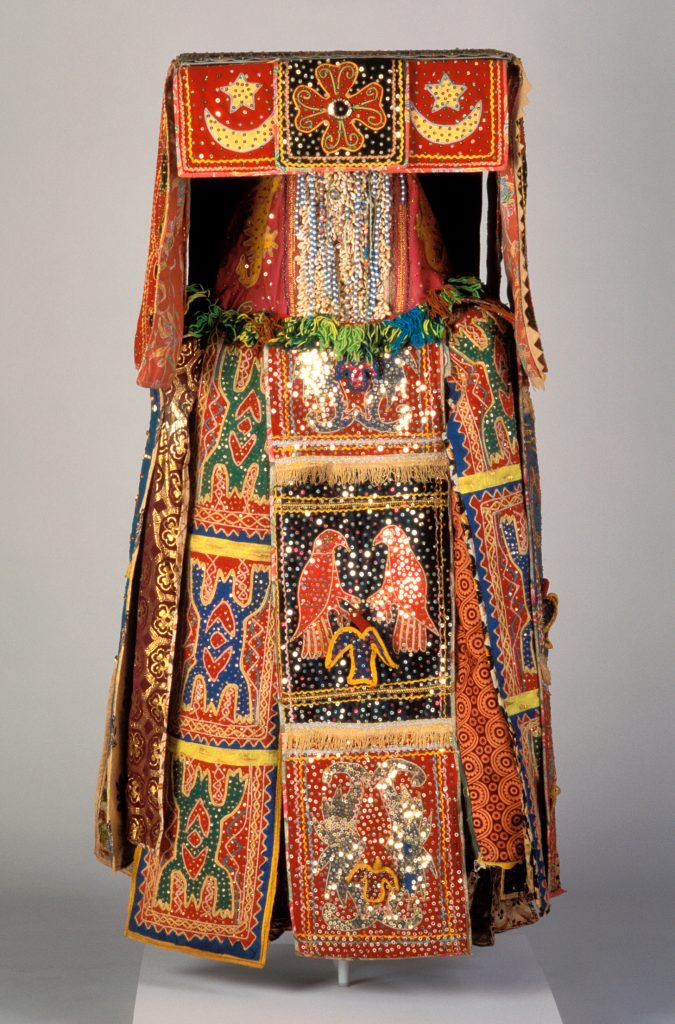Egungun Masquerade Costume (work of art)
Artwork Info
Key Ideas
- This masquerade costume consists of decorative cloth and a mesh face screen. The person who wore this full-body costume would have transformed into a “returned Yorùbá ancestor” who connected the living world with the spiritual world.
- The word egúngún means “powers concealed.” It refers to the masquerade itself and to the ancestors’ supernatural powers.
- Egúngún masquerades are performed at yearly festivals that honor the ancestors and seek blessings for the community.
- The word “AYELABOLA” is embroidered on the back of this costume. This is a Yorùbá word that means “we found wealth on earth.” The Yorùbá peoples are a West African ethnic group who mainly live in parts of Nigeria, Benin, and Togo.
Learn More
Egúngún masquerades originated in Nigeria among the Yorùbá peoples. The Yorùbá make up the largest ethnic group in Africa. The egúngún masquerade ceremony is now honored and performed in Africa and throughout the world, from the Republic of Benin and Sierra Leone to parts of the Caribbean and the Americas. The Yorùbá honor their ancestors during this annual ceremony.
The artist who made this costume decorated its panels with designs from Yorùbá, Islamic, and European traditions. The dancer who wore it could see through the mesh face panel. The face panel is decorated with cowrie shells, beads, and coins. This person would have spun rapidly, making the fabric panels open to show the costume’s colorful layers. The layers of these costumes are built up over time. Patrons purchase luxurious, expensive cloth to be added to the costume. Sometimes the fabric is locally produced. Other times it is imported.
For the Yorùbá the costume represents the importance of the ancestor spirits. It is also a statement of status for the patron. The valuable fabrics and symbols of wealth that adorn the costume (cowrie shells, beads, and coins) show respect to the ancestors. The Yorùbá word AYELABOLA is embroidered on the back of the costume. In English the translation of this word is “we found wealth on earth.” The movements, gestures, and playful actions that would accompany an egúngún masquerade performance are missing from this costume in its current museum form.
tags: pattern, movement, animals, collaboration, ritual, part/whole, variation, family
Additional Resources
Resources for Teachers
- Explore a lesson plan that features this masquerade costume.
- Watch a short documentary about the egúngún masquerade and festival.
- Explore a teaching kit about Yorùbá art and culture.
Resources for Students
- Watch a video of an egúngún masquerade.
- Explore another egúngún masquerade costume at the NCMA.
- Watch a time-lapse video of the African gallery installation at the NCMA.
Images
-

Egungun Masquerade Costume
Full body costume made up of multiple layers of colorful fabric in different patterns and animal designs. The fabric is adorned with sequins, beads, and cowrie shells. The head portion includes a net panel over the face. The panel is decorated with cowrie shells, beads, and coins.
